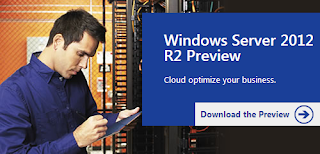What's New in Windows Server 2012 Networking?
Microsoft recently launched the trial version for their latest instalment of the Server OS, Windows Server 2012 R2. As many scramble for the new release and begin to get a glimpse of the new features, here at Firebrand we will be reflecting on some of the new editions Microsoft have made to networking in Windows Server 2012 and the R2 edtion.
A focus on Cloud
Some of the major investments in Windows Server 2012 have been in the areas of failover clustering, virtualization and file services. While these are all networking-related, at first glance it might seem that not so much work has gone into the pure Windows networking features. One of the reasons for that is that Microsoft is increasingly interested in cloud computing and providing an operating system that consumers of the cloud service will be able to deploy in a cloud environment.
However, there have been some nice improvements in 802.1x authenticated wired and wireless access, BranchCache, Data Center Bridging or DCB, the Domain Name System Server and client, and the DHCP server and client.
Windows Networking did a great series on this, read more about the new improvements here.
Time to get abstract...
Abstraction is a key feature of cloud computing and when we are able to abstract network, compute and storage completely, we will come very close to fulfilling the promise of cloud computing. Microsoft has taken a big step in that direction by introducing Hyper-V Network Virtualization.
It's all about IPAM
IPAM is an important new feature in Windows Server 2012. The built-in IPAM feature will save companies money and ensure better compatibility and because IPAM has the potential to be one of the most universally useful new features in Windows Server 2012.
Read more about IPAM here.
Data Center Bridging (DCB)
Data Center Bridging is an important technology for businesses that want to increase performance, decrease administrative overhead and leverage existing Fibre Channel or iSCSI mass storage assets. Microsoft’s implementation of DCB in Windows Server 2012 will make it easier and less expensive to deploy on Windows-based networks.
What next?
So as you begin to digest all the new features of Server 2012, keep your eyes peeled as we look to cover SQL Server 2014 and System Center 2012 R2 in the coming weeks.
Author Bio:
Edward is a member of the Marketing team focussing on Technical writing and Community Engagement for Firebrand. Working in the Industry for over 2 years, Edward has experience with Microsoft Technologies including SharePoint and Windows Server and Exchnage Server. Edward writes for a variety of Blogs and Publications on all things Technology

